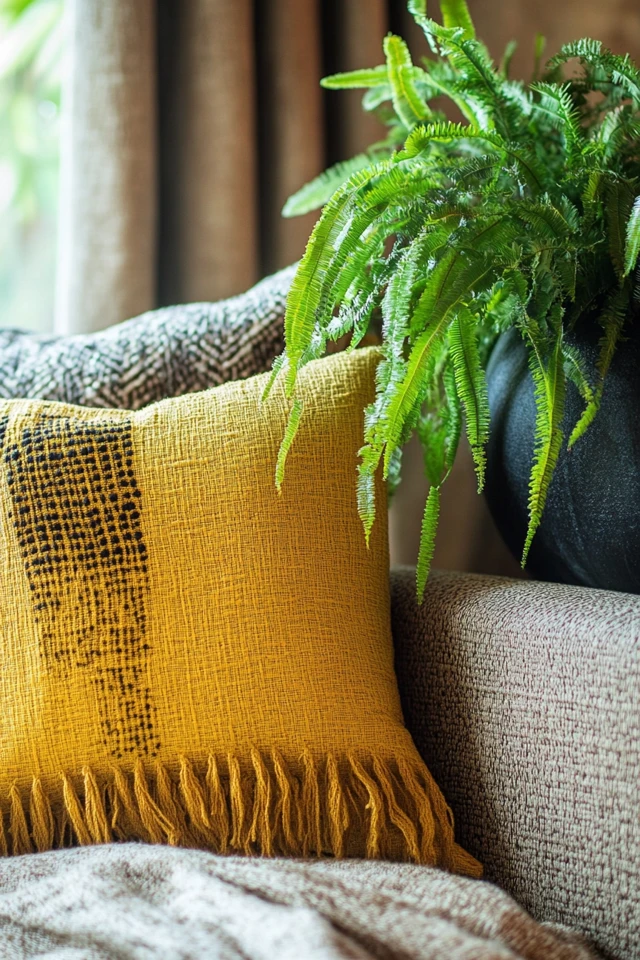Introduction
Texture is the secret ingredient that breathes life and warmth into any bohemian space. With its emphasis on layering, natural materials, and artisanal charm, bohemian design thrives on textures that stimulate the senses and create a cozy, inviting atmosphere. I still remember revamping my living room with a mix of plush rugs, macramé wall hangings, and a distressed leather pouf. The transformation was incredible—what once felt flat and lifeless now exuded depth and personality. Friends would sink into the space and immediately comment on how comforting and lived-in it felt, all thanks to the power of texture.
Boho interiors are defined by their ability to combine diverse elements in a way that feels harmonious and unique. By layering textures—whether it’s soft throws, woven furniture, or tactile wall art—you can create a space that feels as visually rich as it is comfortable. This guide explores how to incorporate and layer textures to elevate your bohemian decor, whether you’re designing a bedroom, living room, or even an outdoor space.
The Perfect Design for You
Using texture to transform a bohemian space is perfect for anyone looking to create a home that feels warm, dynamic, and personal. Imagine a living room where a patterned wool rug grounds the space, a rattan chair adds an organic touch, and throw pillows with fringe and embroidery add layers of comfort. Texture not only makes a room look more appealing but also makes it feel cozier and more welcoming.
Whether you’re starting from scratch or adding finishing touches, this approach is highly adaptable to different budgets, room sizes, and personal preferences. From minimalist boho designs that focus on subtle layers to maximalist spaces that overflow with pattern and color, texture is the key to bringing your vision to life.
Picture Gallery
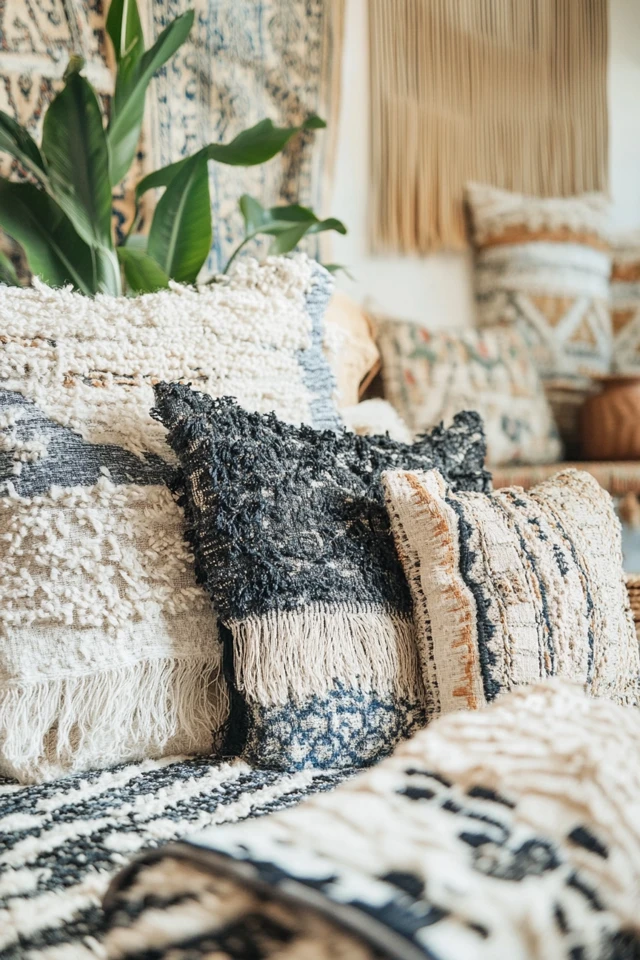
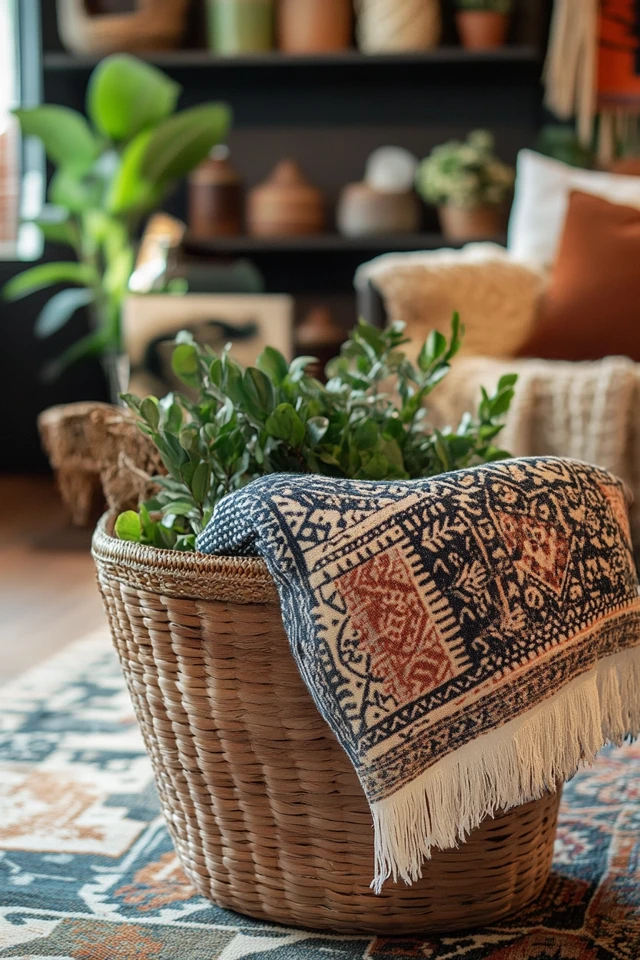
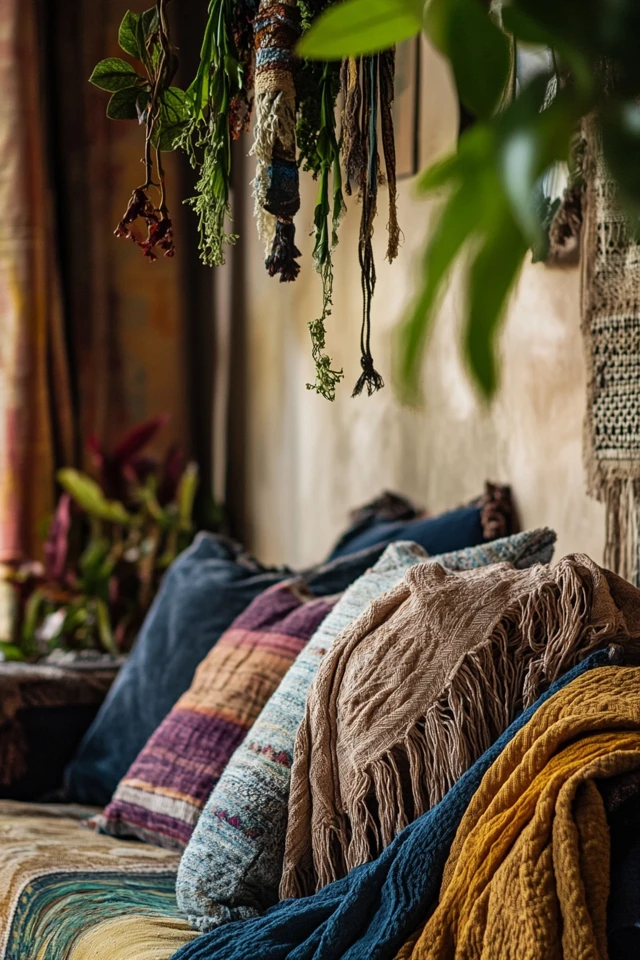
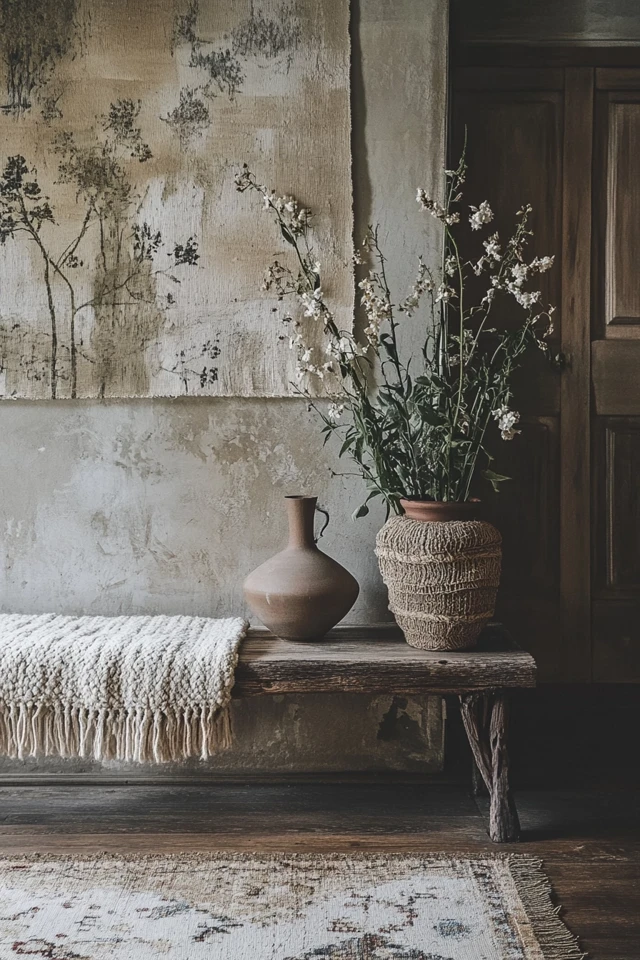
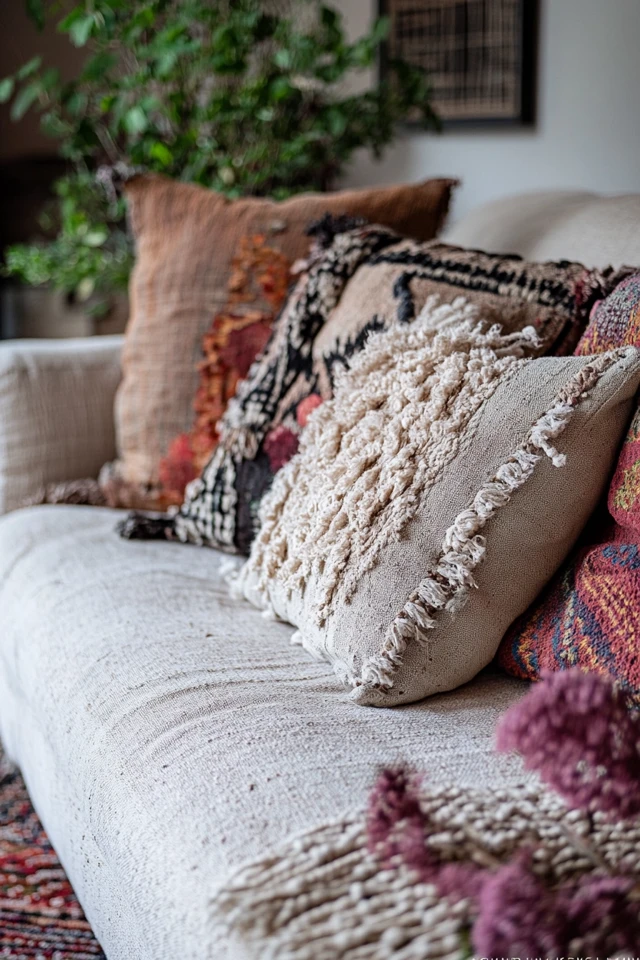
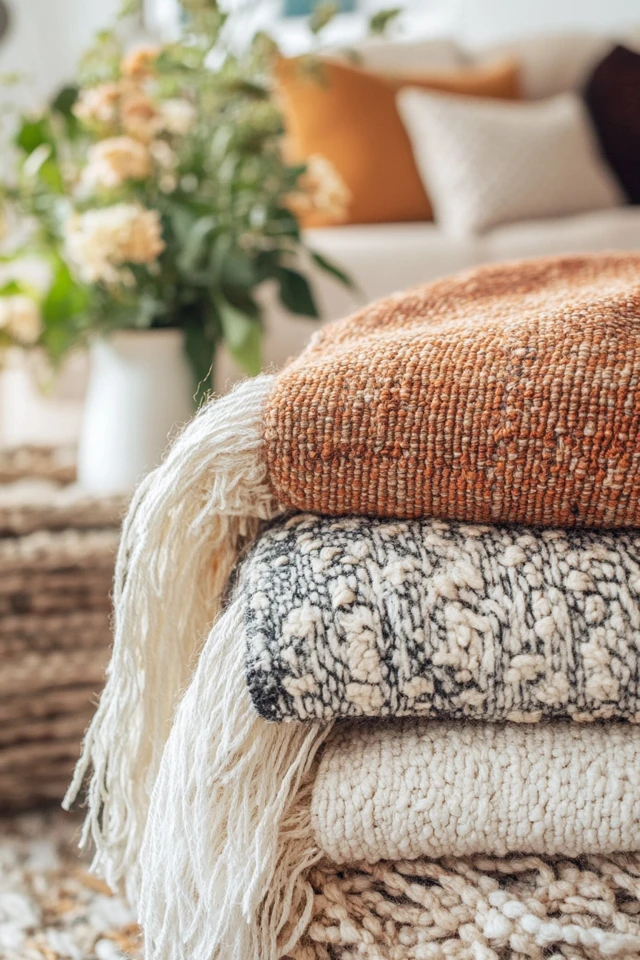
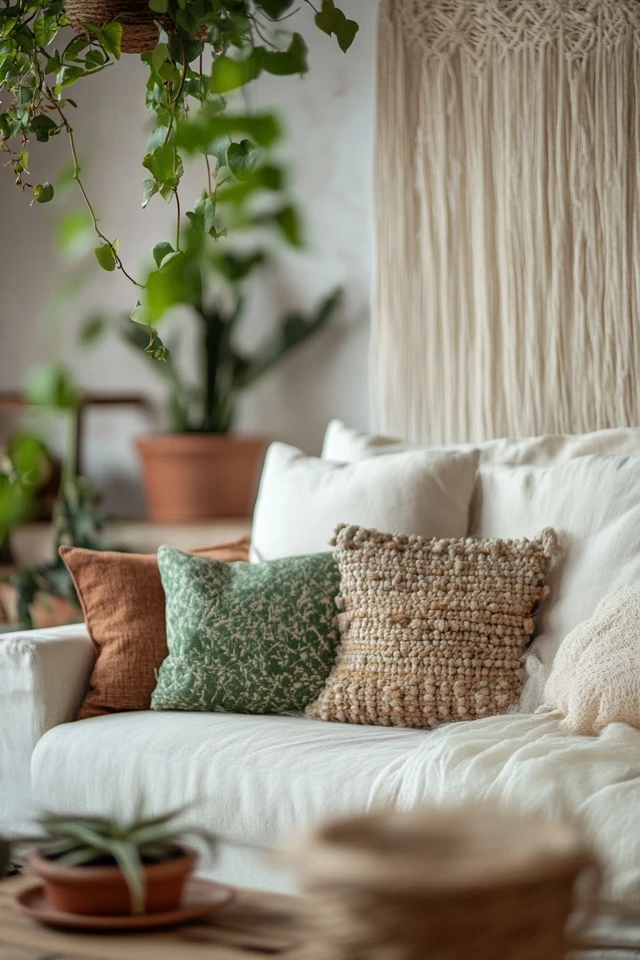
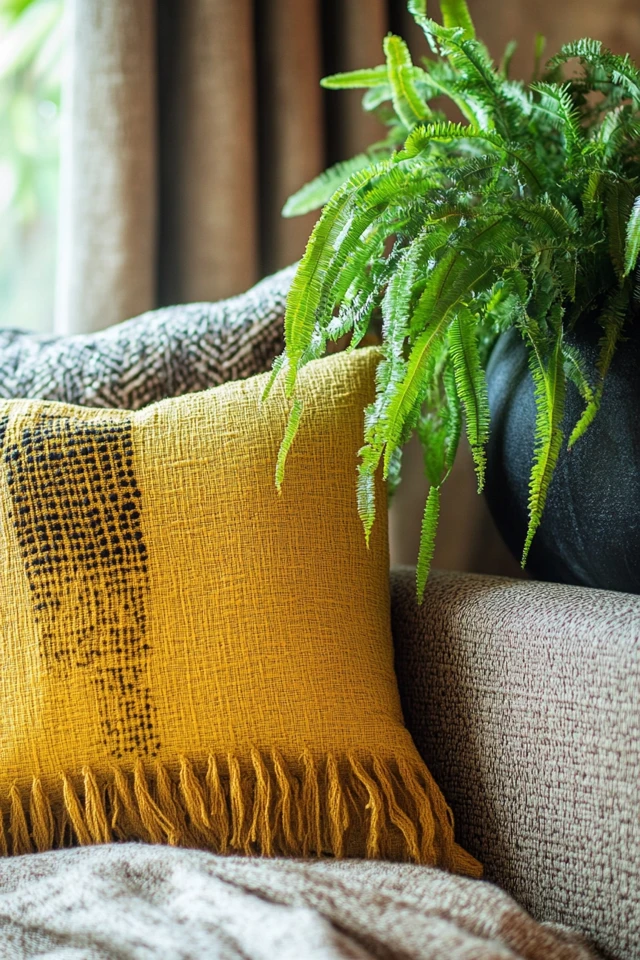
Why These Key Elements Work So Well Together
Texture is a cornerstone of bohemian design because it creates depth, interest, and a sense of harmony. Here’s why it works so beautifully in boho spaces:
1. Layered Textiles:
Boho style thrives on layering textiles like throws, rugs, and cushions to add softness and create a lived-in feel.
2. Natural Materials:
Woven baskets, rattan furniture, and wood accents bring organic texture and warmth to bohemian interiors.
3. Artisan Details:
Handmade items like macramé wall hangings or pottery introduce tactile elements and celebrate craftsmanship.
4. Contrast and Balance:
Mixing rough textures, like jute or wood, with soft ones, like velvet or wool, creates a balanced, multidimensional look.
5. Versatility:
Textural elements can be adapted to any room, from plush rugs in a living area to textured bedding in a boho-chic bedroom.
How to Use Texture to Transform Bohemian Spaces
1. Layer Rugs for Depth and Warmth
- What to Include: Use a combination of large area rugs and smaller accent rugs in various materials and patterns.
- Why It Works: Layered rugs add depth, softness, and visual interest to your space while defining different zones.
- How to Style It: Start with a neutral base rug like jute or sisal, and layer a colorful kilim or Moroccan rug on top for contrast and personality.
2. Incorporate Woven Furniture and Decor
- What to Include: Add rattan chairs, wicker baskets, or cane-paneled furniture for an organic, textured look.
- Why It Works: Woven elements bring natural warmth and structure, balancing the softness of textiles.
- How to Style It: Pair a rattan armchair with a plush throw, or use woven baskets to store blankets and magazines while adding texture to the room.
3. Use Tactile Wall Hangings
- What to Include: Decorate walls with macramé hangings, woven tapestries, or textile art for a boho-inspired focal point.
- Why It Works: Textured wall decor adds dimension and softness to vertical spaces, making the room feel more dynamic.
- How to Style It: Hang a large macramé piece above a sofa or bed, or create a gallery wall featuring woven baskets and textile art.
4. Add Plush and Patterned Throw Pillows
- What to Include: Use throw pillows in a mix of fabrics, like velvet, linen, and cotton, with details like tassels, fringe, or embroidery.
- Why It Works: Pillows are an easy way to layer texture and color, enhancing the coziness and character of a boho space.
- How to Style It: Arrange pillows of varying sizes and patterns on a sofa or bed, mixing neutral tones with bold, bohemian prints.
5. Introduce Raw and Distressed Wood
- What to Include: Use wooden furniture, such as coffee tables, shelves, or bed frames, in raw or distressed finishes.
- Why It Works: Wood adds an earthy, grounding element to boho spaces and contrasts beautifully with softer textures.
- How to Style It: Pair a distressed wood coffee table with a plush area rug, or use floating wood shelves to display books and decor.
6. Layer Throws and Blankets
- What to Include: Drape throws made from wool, chunky knit, or lightweight cotton over furniture for added texture.
- Why It Works: Layering throws adds warmth and visual interest while making the space feel cozy and lived-in.
- How to Style It: Toss a fringed blanket over the arm of a sofa or the foot of a bed, letting it drape naturally for a relaxed look.
7. Incorporate Textured Lighting
- What to Include: Use woven pendant lights, beaded chandeliers, or lamps with fabric or paper shades.
- Why It Works: Textured lighting enhances the boho vibe while casting soft, ambient light for a cozy atmosphere.
- How to Style It: Hang a rattan pendant light above a dining table or use a table lamp with a linen shade on a bedside table.
8. Add Greenery for Natural Texture
- What to Include: Decorate with a mix of potted plants, trailing greenery, and dried grasses like pampas or wheat.
- Why It Works: Plants bring life and organic texture to bohemian spaces, softening hard lines and adding movement.
- How to Style It: Use woven planters for potted plants, and place a vase of pampas grass on a console table for a sculptural touch.
9. Play With Metallic Accents
- What to Include: Incorporate brass, copper, or gold decor items like mirrors, trays, or candleholders.
- Why It Works: Metallic finishes add a touch of glam and contrast against the softer, natural textures of boho decor.
- How to Style It: Hang a gold-framed mirror above a woven console table, or scatter metallic candleholders on a wooden shelf.
10. Incorporate Subtle Patterns Through Textiles
- What to Include: Choose patterned curtains, bedspreads, or tablecloths in boho-inspired prints like paisley, tribal, or floral designs.
- Why It Works: Patterns add another layer of texture and complexity without overwhelming the space.
- How to Style It: Use sheer, patterned curtains to soften natural light, or layer a printed duvet over neutral bedding for a bohemian bedroom retreat.
FAQ Section
Q1: How do I avoid overloading a boho space with texture?
A1: Balance is key. Combine a variety of textures but keep the color palette cohesive to avoid visual clutter. Focus on layering complementary materials rather than piling on too many competing elements.
Q2: Can I use texture to make a small boho space feel larger?
A2: Absolutely! Use lightweight, airy textures like sheer curtains and avoid overly bulky pieces. Layering a few key items like rugs and pillows can add depth without overwhelming the space.
Q3: How do I incorporate texture into a minimalist boho design?
A3: Stick to neutral tones and natural materials like linen, jute, and wood. Use fewer layers but focus on quality textures to create visual interest without clutter.
Q4: What’s the best way to add texture to walls?
A4: Use macramé hangings, woven tapestries, or textured wallpaper. You can also incorporate wood paneling or a gallery wall featuring tactile decor.
Q5: How do I mix modern and bohemian textures?
A5: Pair sleek modern furniture with softer boho accents like woven rugs, patterned pillows, or a chunky knit throw to create a balanced and cohesive look.
Variations
- Minimalist Boho: Use subtle textures like linen curtains, natural wood furniture, and soft wool rugs for a clean yet layered look.
- Maximalist Boho: Combine bold patterns, vibrant colors, and an abundance of textures like fringe, tassels, and layered rugs for a lively, dynamic space.
- Rustic Boho: Incorporate earthy textures like distressed wood, jute rugs, and raw ceramics for a grounded, natural vibe.
- Modern Boho: Blend streamlined furniture with textural elements like velvet cushions, woven decor, and metallic finishes for a contemporary twist.
How to Showcase It
- Living Room: Layer textured rugs, throw pillows, and wall hangings to create a cozy yet eclectic gathering space.
- Bedroom Retreat: Combine soft bedding, a macramé headboard, and a mix of woven baskets for a serene, boho-inspired bedroom.
- Dining Area: Use textured placemats, upholstered chairs, and a wooden dining table to add warmth and depth.
- Outdoor Space: Decorate with outdoor rugs, woven poufs, and potted plants for a boho oasis on a patio or balcony.
Occasions to Feature It
- Everyday Living: Enjoy the warmth and comfort of textured boho spaces in your daily life.
- Seasonal Updates: Add chunky throws and rugs in winter or breezy linen and woven decor in summer to reflect the seasons.
- Hosting Guests: Impress visitors with a textured, layered space that feels cozy and visually captivating.
- Creative Projects: Use texture as a foundation for DIY decor projects like weaving or macramé to personalize your space further.
Conclusion
Texture is the cornerstone of transforming bohemian spaces into cozy, visually rich havens. By layering diverse materials—plush rugs, soft throws, and natural woods—you can create depth, warmth, and personality in any room.
Whether your style leans minimalist, rustic, or vibrant and maximalist, texture is the key to achieving the layered, inviting feel that makes boho interiors so beloved. Experiment with different elements, and watch your space come to life with the charm and comfort of bohemian design.

